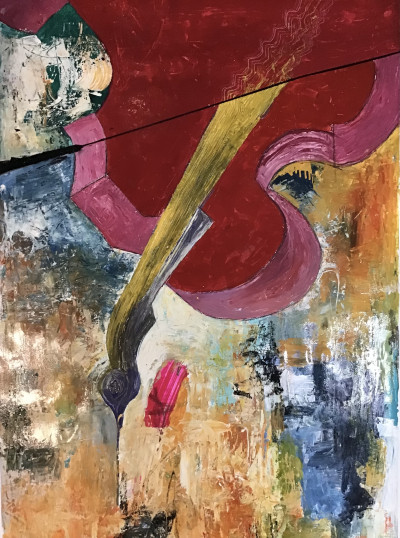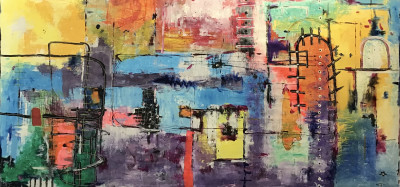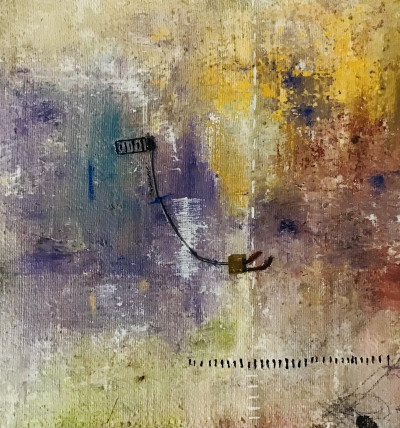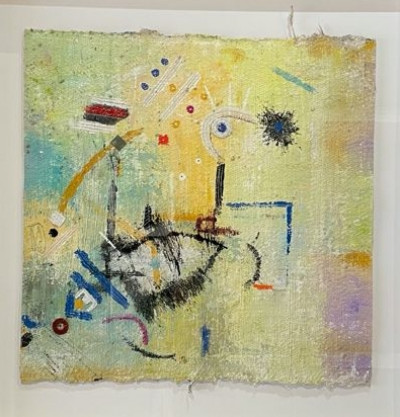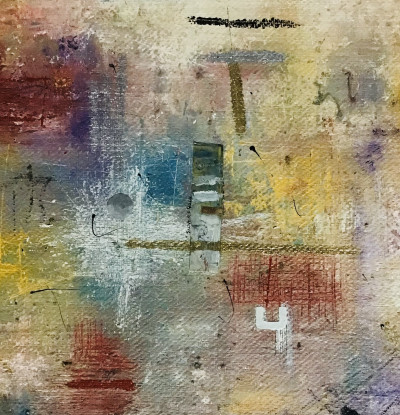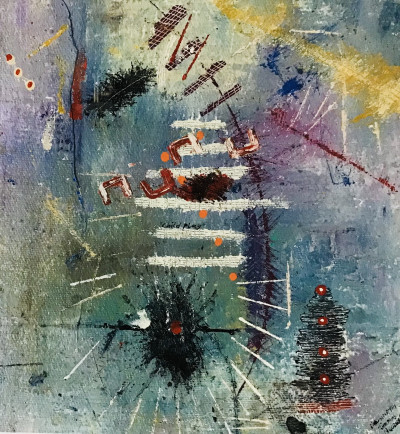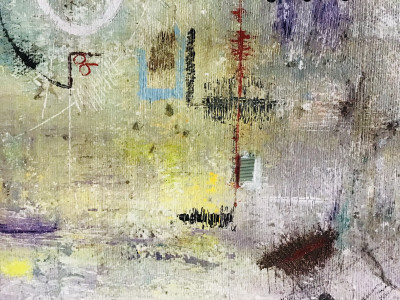Nkosinathi Thomas Ngulube has come a long way in the art industry. Self-taught in sculpture, painting and now a leading art gallerist, he celebrates his coming of age in the art sector, proudly, that he never quit when it was possible to. The rawness of Nathi’s work is unpremeditated and sanguine with layers of mixed mediums that, like in the form of his early sculptures whereby he created from foraged and easily found objects, are applied emotionally, psychologically in multiples of textures and other mediums until the artwork relates back to the inner self it emanated from.
Nathi’s works are roughly and haphazardly adorned with markings, scratchings, symbols and fingering as he does not use the conventional brushes to paint. He also insinuates the two fold of certainties and misgivings of both informal and formal architectural illustrated lines: which demarcates socio-economic lines and also quotes, “ it also allows me to delve into the hessian material like l will with sculpture, without tearing through as with fragile materials like paper”. As human beings we are constantly searching and scratching to reveal what is covered, in the hope of an unexpected sight or revelation through curiosity. Animals do that too, in many aspects.
His frenetic application of colours direct from the oil tube are non-existent of a brushstroke, as he uses his fingers and any other utensils to apply against the porous canvas of hessian material. The artist’s works challenges its audience to a simultaneous viewing and study as if it is optical art, which evokes his inner peace with turmoil, and victory over trials. His works have strength to welcome his audience as they relate to its consistency of emotional mirroring beauty against darkness. Nathi is an artist who encourages us to see the hidden beauty in an ugly situation., like reading between the lines of chaos.
Symbolism and text are an important formality to the artist. His mirrored texts, misspelt words, academic titles are an engagement for his audience to think and conversate with each piece. His vernacular symbols are a metaphor which reveal both his executional style and persona. His symbols represent the male and female gender in varied attributes consistently. His originals are nonrepetitive.
Nathi has been compulsively painting on different surfaces. One in particular has been personal in his life as both tragic and victorious. In brief, during a sympathetic event, living in a derelict building, the artist used the hessian material with his family, in winter at the birth of their 5th child, as part of their blankets to add warmth. For a period of time, to the artist’s angst, in relation to the odour of the hessian fabric, he fathomed with the porous material until after many months, in a therapeutic gesture, he considered the fabric to be one of his most chosen art fabrics. Through the turmoil of an alien material, he finally fell in love with its uniqueness and challenging nature. “Hessian takes a lot from me; l pours out my all to it and remain satisfied by the process. It is victory to recycle useless to greatness: it is a life story” The hessian material solidifies after many layers, allowing Nathi to explore more of his emotionally, religiously and sexually layered conversations and thoughts. Expressionism is a challenging discipline in a contemporary art world, and for artists to be fully liberal and execute in incompatible materials, identifies them in the art industry as pacesetters.
Nathi pours his thoughts, moral values in regard to religion, society, political correctness and spiritual discernment with a seamless connection between his uncensored thoughts and his various materials like Indian ink, oil pastels, enamel, acrylics and red wine.


